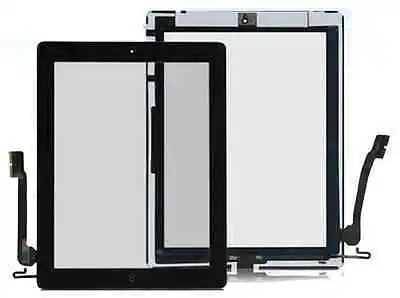Proces výroby dotykových brýlí je pečlivý a detailní postup, který zahrnuje různé kritické fáze. Mezi ně patří řezání a broušení skleněného substrátu, které jsou nezbytné pro zajištění kvality a přesnosti konečného výrobku. Tyto procesy významně ovlivňují trvanlivost, přesnost a spolehlivost dotykových skel.

Výběr a řezání skleněného substrátu
Proces začíná výběrem vhodného skleněného substrátu, obvykle sodnovápenatého nebo borosilikátového skla, které je známé svými optimálními vlastnostmi pro dotykové obrazovky. Poté se sklo nařeže na požadovanou velikost pomocí řezacího stroje vybaveného diamantovým ostřím. Tento stroj je pečlivě naprogramován tak, aby řezal sklo na přesné rozměry požadované pro zamýšlenou aplikaci.
Broušení a dokončování skla
Po broušení se sklo brousí, aby se odstranily ostré hrany nebo otřepy, které mohly vzniknout při broušení. K tomuto účelu se používá bruska vybavená několika brusnými kotouči různé zrnitosti. Stroj je přesně kalibrován tak, aby brousil sklo na požadovanou tloušťku a dosáhl hladké povrchové úpravy.
Zajištění kvality a přesnosti povrchu
Proces broušení je při výrobě dotykového skla klíčový, protože určuje kvalitu a přesnost povrchu skleněného substrátu. Bruska odstraňuje nedokonalosti a vady, jako jsou škrábance nebo třísky, a zajišťuje tak bezchybnou a rovnoměrnou povrchovou úpravu. Tento krok je rozhodující pro přípravu skla na další výrobní fáze.
Kontrola kvality a inspekce
Proces výroby dotykového skla zahrnuje kromě řezání a broušení také přísné kontroly kvality, které zajišťují, že konečný produkt splňuje požadované normy. Tyto kontroly zahrnují vizuální kontroly, měření tloušťky a hodnocení povrchové úpravy, jejichž cílem je odhalit případné vady nebo nedokonalosti skleněného substrátu.
Úvahy o trvanlivosti a spolehlivosti
Procesy řezání a broušení mají zásadní význam pro trvanlivost a spolehlivost dotykového skla. Skleněný substrát musí odolávat každodennímu namáhání při používání, včetně poškrábání, nárazů a dalších forem opotřebení. Zajištění přesného řezání a broušení skla zvyšuje jeho schopnost odolávat těmto výzvám v průběhu času.
Závěr
Závěrem lze říci, že řezání a broušení jsou nedílnou součástí procesu výroby dotykového skla. Tyto fáze vyžadují přesnost a pozornost věnovanou detailům a jejich cílem je vyrobit vysoce kvalitní skleněný substrát, který splňuje přísné normy. Na těchto procesech závisí trvanlivost a spolehlivost dotykového skla, což zajišťuje, že konečný výrobek zůstane přesný a spolehlivý po celou dobu své životnosti.
Shrnutí často kladených otázek
Otázka: Jaké typy skla se obvykle používají pro skleněné substráty dotykových obrazovek?
Odpověď: Sodnovápenaté a borosilikátové sklo se běžně používají díky svým žádoucím vlastnostem pro aplikace s dotykovými obrazovkami.
Otázka: Jak se skleněný substrát řeže a brousí podle požadovaných specifikací?
Odpověď: Řezací stroj s diamantovým ostřím přesně řeže sklo a poté se brousí na stroji s různou zrnitostí, aby se dosáhlo požadované tloušťky a povrchové úpravy.
Otázka: Proč jsou řezání a broušení kritické pro sklo dotykového displeje?
Odpověď: Tyto procesy zajišťují, že skleněný substrát je odolný, spolehlivý a bez vad, což přispívá k přesnosti a dlouhé životnosti dotykového skla.
